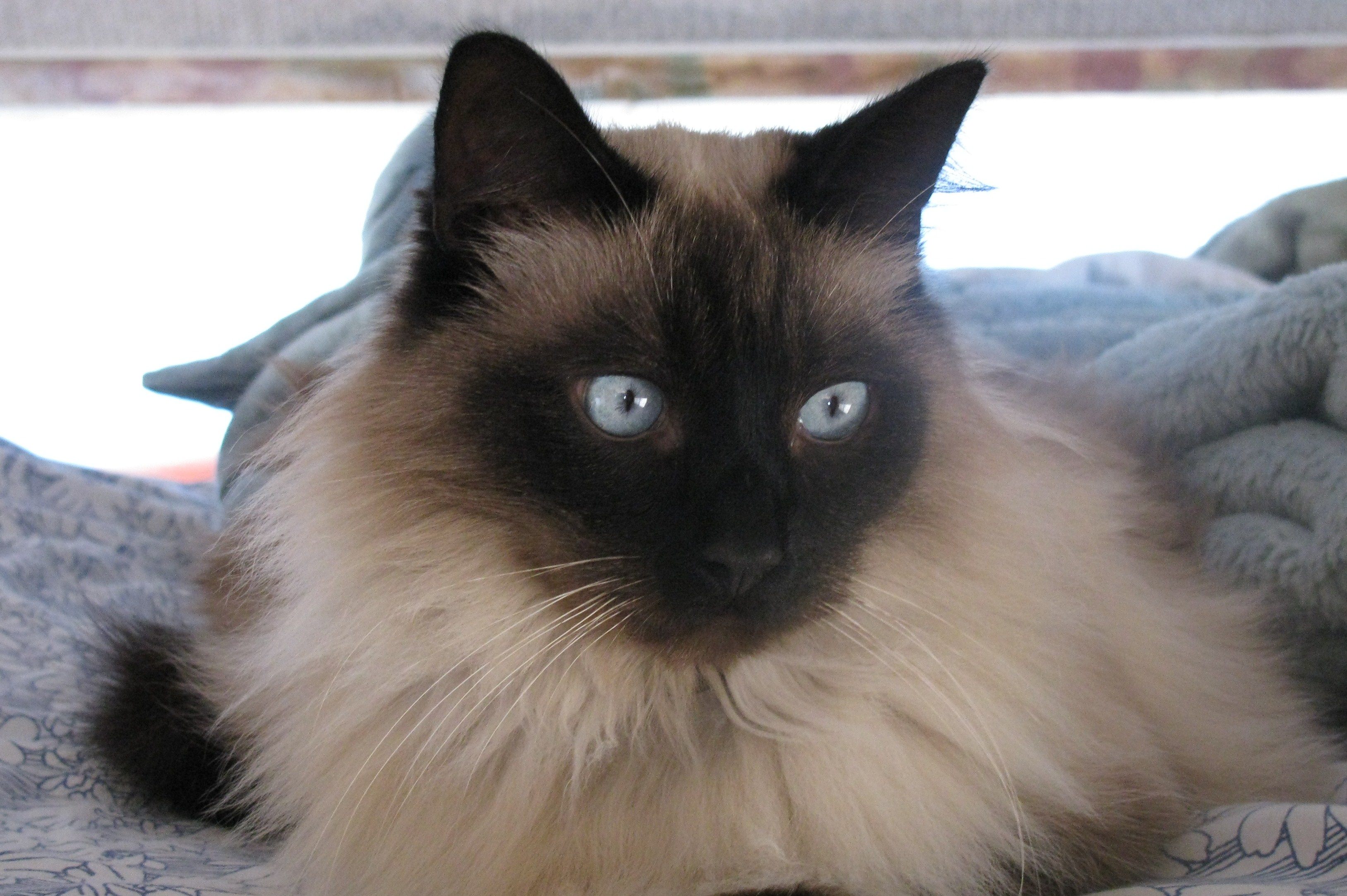
The Breed History
The gene for longer hair in Siamese cats is autosomal recessive
in inheritance, and when these semi-longhaired cats were born
into Siamese litters in the 1940s, they were selected for in a new
breeding program. Prior to this time, they were considered an
undesirable offspring type and called Longhaired Siamese. The early
breed development occurred in California and New York during
the 1950s. The TICA and CFA accepted this breed in 1970, and FIFe
followed in 1972.
Javanese refers to semi-longhaired Siamese (e.g., Balinese) with
lynx (tabby) and tortie point patterns instead of classic Siamese
solid points (lilac, seal etc). The Javanese as a separate breed was
accepted by CFA in 1979-in all other registries Javanese cats
are part of the Balinese breed. Overseas the Javanese name is
synonymous with Oriental Longhair.
Traditional (Applehead) Balinese cats are of a type derived from
the Traditional (Applehead) Siamese. They are of heavier build with
a much rounder face and head conformation, smaller ears, and
longer haircoat over the body (>2") including ruff, pantaloons, and
ear tufting. Most registries do not have a separate partition for
this subtype. In the many registries, they are registered but are not
generally show cats.
Falling somewhere in between the Traditional Balinese and Modern
Balinese type is another intermediate type termed "Classic".
The name "Balinese" is thought to derive from these cats appearing
as graceful as Balinese dancers.
Outcrossing to Siamese cats is still allowed in the CFA registry.
Physical Characteristics
Weight: 6-11 lb (2.5-5 kg).
Traditional subtype cats average 10-14 lb (4.5-6.5 kg)
Coat: The semi-longhair single coat is fine, silky and flat lying
and not much longer than a short haircoat; the longest hairs are
found on the tail. They have a dark face mask. All of the Siamese
color point coats are represented in the Balinese. In CFA registry,
recognition is extended only to blue, chocolate, lilac and seal
point-other pointed cats are referred to as Javanese, a separate
breed.
The body coat color and points of the Balinese usually becomes
darker as the cat ages. Intermediate (medium) length coats result
from outcross mating. These shorter haired cats are termed
variants. This type of coat is short and plush, somewhat in between
the shorthair and semi-longhair. These variants are not shown.
Eyes: Medium in size, sapphire blue, almond shaped. Deeper blue is
preferred.
Points of Conformation: These cats share most of the same
conformation points as Siamese cats; the longer coat with
well-plumed tail is the distinguishing feature. Because of the longer
cover of hair though, these cats appear less angular to the eye than
the Siamese. Ears are large, with some interior furnishings. The
Balinese are built like the Siamese. The head is an elongated tapered
wedge with a fine muzzle and straight long nose. Paws are delicate
and oval. The tail is tapering, thin and ends in a point.
Grooming: For the Balinese cat, there are low-moderate grooming
needs and a low matting tendency.
Recognized Behavior Issues and Traits
Reported breed characteristics include: Highly intelligent, friendly,
though some individuals may be aloof. The Balinese are curious,
playful and often less vocal, a bit softer voiced, and a bit less active
than the Siamese cats. They are also highly social, and need plenty
of human contact and mental stimulation; may follow favored
people around the house. Balinese cats are content to be lap cats in
between burst of activity. Climbing trees or perches are important
for these athletic cats; they love being up high. Good with children
and dogs; may even curl up and sleep with a favored dog and
let themselves be groomed by that dog. If left alone all day, may
benefit from another cat in the household. Not suited to an outdoor
lifestyle.
Normal Breed Variations
Need to watch calorie intakes as can become obese more easily
than some other breeds
Drug Sensitivities
None reported in the literature
Inherited Diseases
Because this breed originated primarily from Siamese cats, and
outcrossing with Siamese continues, see Siamese Pointed Cat
chapter for information on the pointing gene and its effects on
coat and vision, and other Siamese breed conditions.
Disease Predispositions
None reported in the literature
Rare and Isolated Reports
Sphingomyelin Lipidosis (SYN: Sphingomyelinosis): This is a rare
condition and reported only in Siamese and Balinese. This storage
disease results in reduced activity of the enzyme sphingomyelinase
that metabolizes lipids and when deficient, leads to lysosomal
accumulation of sphingomyelin in many tissues. Cholesterol
accumulates in the liver. Sphingomyelin lipidosis is similar to
human Niemann-Pick disease Type A.
A case report of a Balinese kitten described onset of hind limb
dysmetria at three months of age, with gradual progression of
signs. Head tremor, mydriasis and nystagmus, and other signs
developed. Visual deficits, weakness and progression to moribund
state occurred; hepatosplenomegaly and plantigrade stance was
also described in other reports. This type of storage disease is milder
and more slowly progressive when compared with GM1 and GM2
gangliosidosis. Histologic lesions were present in kidney, spleen,
lung, liver and brain. It is inherited as an autosomal recessive trait
in Siamese cats; likely the same in Balinese cats.
Feline Mucopolysaccharidosis VI: A case report described two
Balinese cats with paresis/paralysis, facial dysmorphia (flattened
face, small ears, bulging forehead), skeletal abnormalities (fusion
of cervical and lumbar region vertebrae, osteoporosis and widened
IV spaces in T-L, flat-chested, long bone epiphyseal dysplasia,
coxofemoral luxation).
Excessive urinary levels of dermatan sulphate (a glycosaminoglycan;
mucopolysaccharide) were due to lysosomal arylsulphatase
B enzyme deficiency. Onset of clinical signs was at 12-16 weeks
old. Slow growth, smaller stature, abnormal gait progressing to
posterior paresis within a few months, painful lumbosacral area,
large paws, medial stifle deviation and over-flexed rear limbs were
noted. In spite of supportive care, one cat died at 18 months of age.
Diagnosis of disease requires dimethyl-methylene blue test of urine,
and biopsy of skin with fibroblast assay of the enzyme confirmed
reduction of arylsulphatase B. This trait has also been reported in
three Siamese cat families. This is likely an inherited condition as it
has only ever been reported in Siamese and Siamese-related cats.
In a colony of cats studied in Australia, two separate mutations
were found.
Genetic Tests
None commercially available
Miscellaneous
- Breed name synonyms: Javanese (the name applies to
non-Siamese type points such as cream, tabby, tortie and red).
In TICA and other non-CFA registries, the Balinese and Javanese
are the same breed. In Europe, they may be classed as Oriental
Longhairs.
- Other breed synonyms include: Bali, Longhaired Siamese,
Lao-Tsun Cat.
- Registries: FIFe, TICA, CFA, ACFA, CFF, NZCF, CCA, WCF, GCCF, ACF
- Breed resources: Traditional and Classic Cat International
(including Applehead Siamese, Traditional Balinese):
http://www.tccat.org/
Balinese Cat Society (UK): http://www.rantipole.demon.co.uk/bcs
Balinese and Siamese Cat Club (UK):
http://www.thebalineseandsiamesecatclub.co.uk/
Photo Gallery of Breed - Balinese Cat - Cat Breed


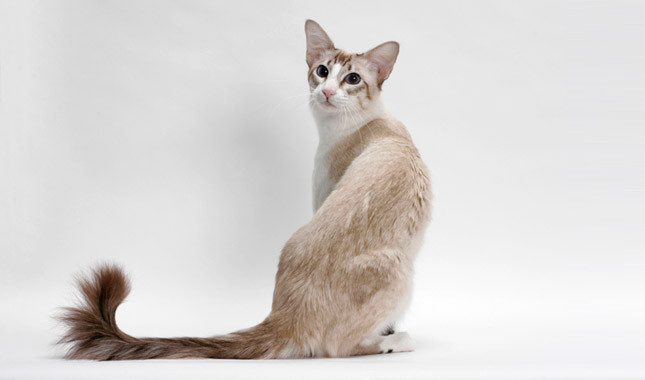
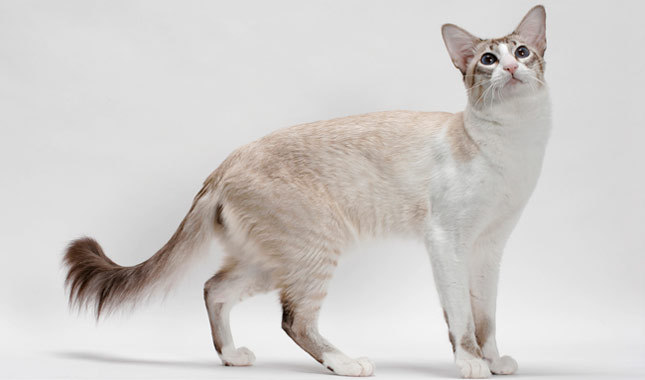
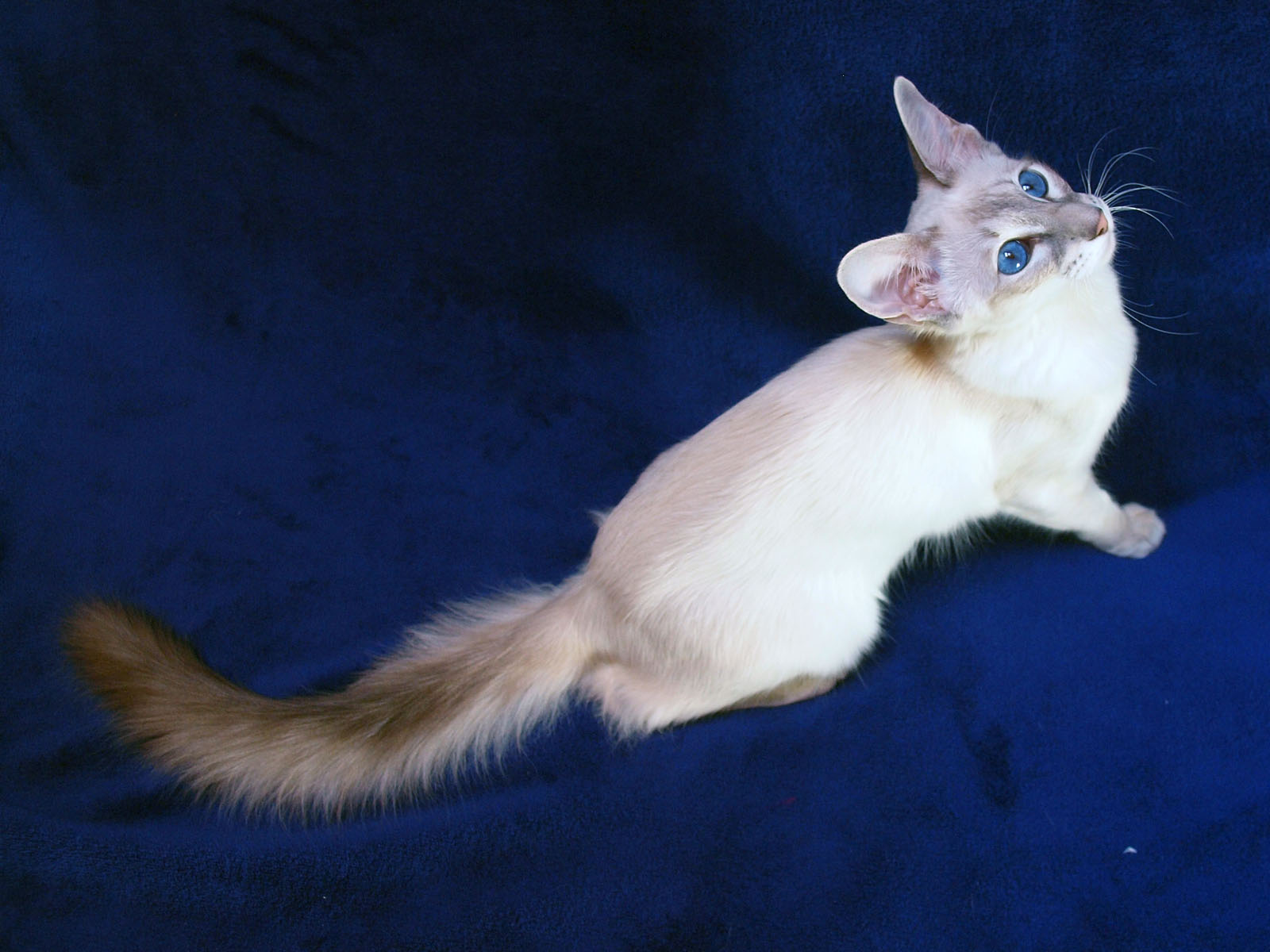
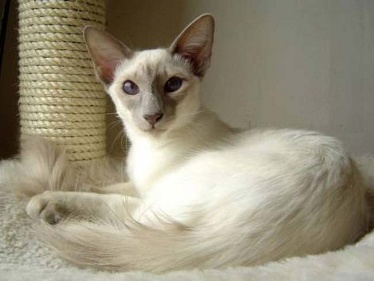
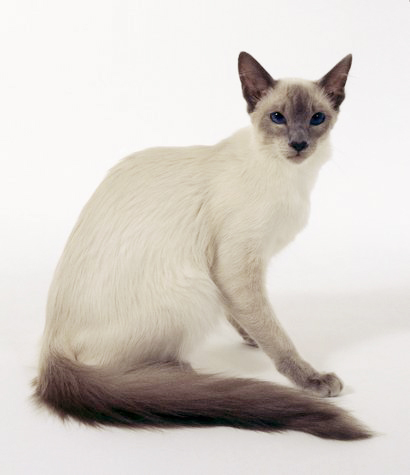

 Animalia Life
Animalia Life